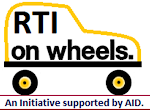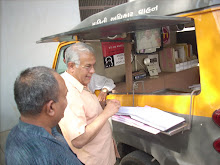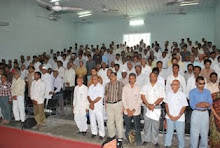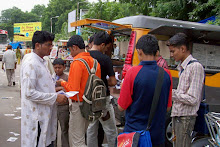Moneylife: Mumbai: Thursday, April 3, 2025.
A recent right to information (RTI) query has exposed alarming irregularities in the installation of hoardings on railway land in Mumbai, revealing that no ownership records exist for 103 out of 306 hoardings. The findings point to the growing influence of the hoarding mafia operating on land owned by the Central and Western Railways, with municipal authorities failing to maintain transparency.
According to data provided to RTI activist Anil Galgali under the Right to Information (RTI) Act by the licensing superintendent’s office of the BrihanMumbai Municipal Corporation (BMC), there are 179 hoardings on Central Railway land and 127 hoardings on Western Railway land. However, the ownership details of 68 hoardings on Central Railway land and 35 on Western Railway land remain unidentified.
The breakdown of hoardings across different municipal wards further highlights the extent of the issue. On Western Railway land, hoardings are spread across wards such as A, D, G South, G North, K East, K West, P South, and R South, with 35 of them lacking ownership details. Similarly, on Central Railway land, hoardings are installed in wards including E, F South, G North, L, and T, where 68 hoardings are unaccounted for.
Following the Ghatkopar hoarding collapse incident, Mr Galgali has urged railway authorities to ensure transparency and strict compliance with municipal regulations. He also demanded that any unauthorised hoardings be immediately removed, and action be taken against those responsible.
The issue is further complicated by allegations of political and bureaucratic interference. According to Mr Galgali, a senior Indian Administrative Services (IAS) officer was allegedly removed from the licensing department due to pressure from the hoarding mafia. The move was reportedly linked to the officer’s positive stance on the new advertising policy of the BMC, which could have disrupted the financial dealings of vested interests in the hoarding industry, he says.
With growing concerns over safety, urban planning violations, and corruption, activists and citizens are now calling for urgent intervention by the railway administration and the BMC to bring accountability and curb the unchecked influence of illegal hoardings in Mumbai.
A recent right to information (RTI) query has exposed alarming irregularities in the installation of hoardings on railway land in Mumbai, revealing that no ownership records exist for 103 out of 306 hoardings. The findings point to the growing influence of the hoarding mafia operating on land owned by the Central and Western Railways, with municipal authorities failing to maintain transparency.
According to data provided to RTI activist Anil Galgali under the Right to Information (RTI) Act by the licensing superintendent’s office of the BrihanMumbai Municipal Corporation (BMC), there are 179 hoardings on Central Railway land and 127 hoardings on Western Railway land. However, the ownership details of 68 hoardings on Central Railway land and 35 on Western Railway land remain unidentified.
The breakdown of hoardings across different municipal wards further highlights the extent of the issue. On Western Railway land, hoardings are spread across wards such as A, D, G South, G North, K East, K West, P South, and R South, with 35 of them lacking ownership details. Similarly, on Central Railway land, hoardings are installed in wards including E, F South, G North, L, and T, where 68 hoardings are unaccounted for.
Following the Ghatkopar hoarding collapse incident, Mr Galgali has urged railway authorities to ensure transparency and strict compliance with municipal regulations. He also demanded that any unauthorised hoardings be immediately removed, and action be taken against those responsible.
The issue is further complicated by allegations of political and bureaucratic interference. According to Mr Galgali, a senior Indian Administrative Services (IAS) officer was allegedly removed from the licensing department due to pressure from the hoarding mafia. The move was reportedly linked to the officer’s positive stance on the new advertising policy of the BMC, which could have disrupted the financial dealings of vested interests in the hoarding industry, he says.
With growing concerns over safety, urban planning violations, and corruption, activists and citizens are now calling for urgent intervention by the railway administration and the BMC to bring accountability and curb the unchecked influence of illegal hoardings in Mumbai.

.png)













































































